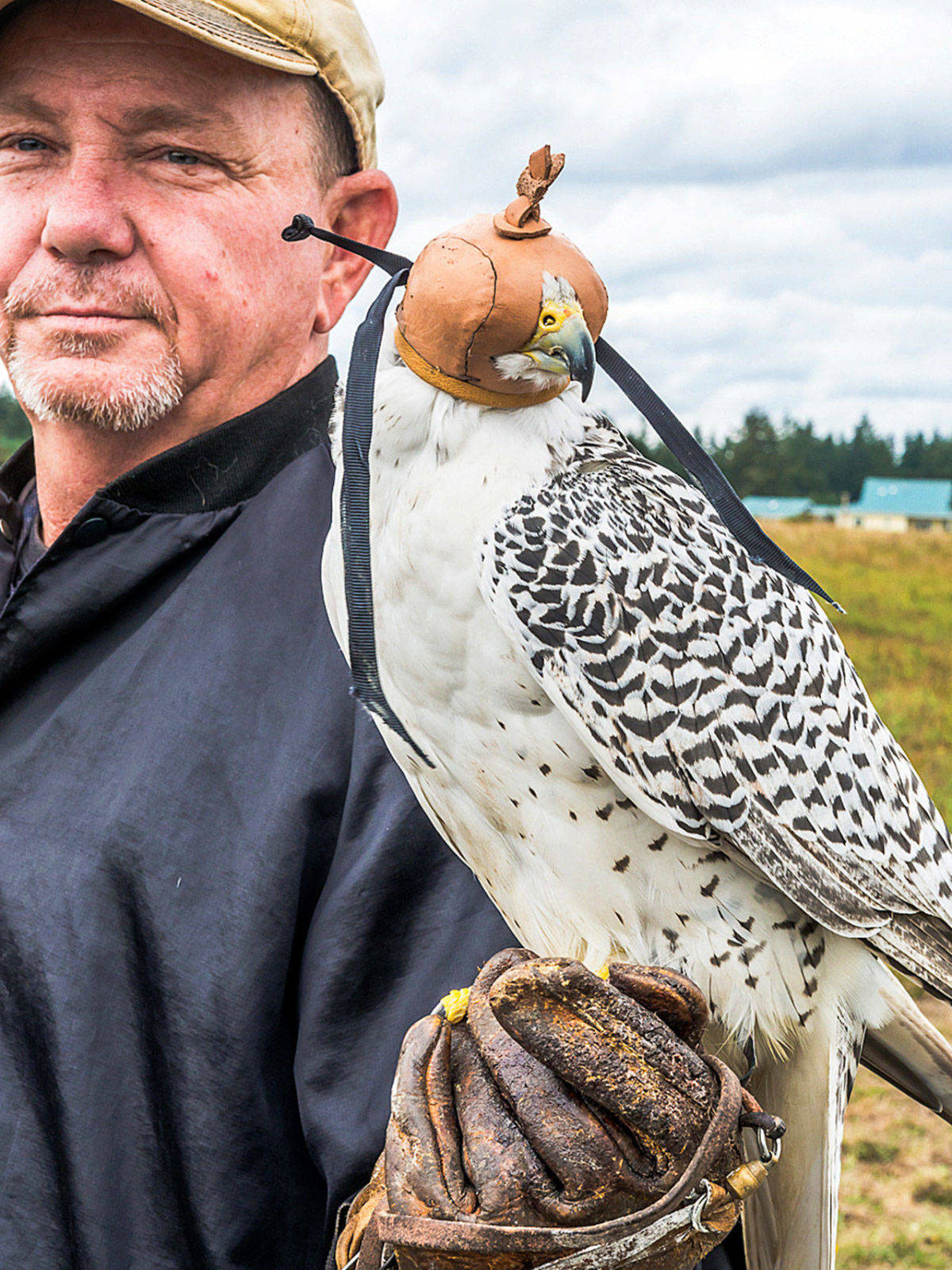Saturday, birds of prey once again star at Whidbey Raptor Day, held annually in the fall at Pacific Rim Institute in Coupeville. Falconers will talk about the birds at the educational event that’s free and suitable for all ages.
Raptors reside at the top of the food chain. On Whidbey, they roost on tree snags and telephone poles, hide in fern and forests, swoop down on fishing boats and waterfronts.
Osprey, owls, peregrine falcons, bald eagles, merlins, red-tailed hawks — all a study in contrasts, so poetic in flight, so predatory by nature.
Bald eagles are a common sight in Whidbey’s snags and can often be seen giving hunting lessons to their young in fields and at low tide.
Pacific Rim Institute for Environmental Stewardship is a non-profit organization dedicated to restoring native species and protecting the environment with sustainable practices.
Raptors fit into its mission because these birds provide a cautionary tale of man’s tendency to disrupt the natural order.
For example, the peregrine falcon is the most widespread raptor and one of the most widely found bird species, according to the Northwest Raptor & Wildlife Center that rescues Olympic Peninsula raptors and other birds. Peregrines are found around the globe from the Arctic tundra to the tropics.
But decades ago, it was listed as an endangered species in many areas because of the widespread use of certain pesticides, especially DDT. Since the ban on DDT from the early 1970s, populations have recovered, supported by large-scale protection of nesting places.
Raptor Day at Pacific Rim Institute is popular with people of all ages. They are able to go eye-to-eye with superheroes of the bird world.
Raptors possess binocular-like vision, razor beaks, cutthroat talons. They snack on chipmunks, snag baby birds from nests and get blamed for many a missing kitten and chicken.
Raptors soar like no other, slipping in and out of air currents and circling like dancers in the sky.
Owls are raptors, also. Feeding and mating mostly at night, they’re known for their echoing symphony of calls.
Raptors can also can be trained to bond with humans for mere bits of meat, work for no pay scaring other birds away from fields and willingly sit still as hundreds of humans admire their feathers and features.
Mutiny Bay Farms in Freeland used trained falcons to scare away pesky, smaller birds from munching blueberry plants.
Steve Layman and Sue Hanneman are two local falconers who have both displayed their trained hunting birds at the annual Raptor Day.
Layman, an expert falconer, raptor biologist and educator, said one sign of a great falconer is the falconer’s ability to let a bird go free and see that bird return — but maybe not for awhile.
Often, Layman’s birds soar off in solitude for weeks or months at a time, but always return, he said in a previous interview.
On Pacific Rim Institute’s 175-acre property, pheasants were once farmed for pheasant hunting; that’s what all those little huts are in the distance.
Raptors far surpass man in hunting skills. They can swoop to speeds of 200 mph to catch prey a mile away.
The peregrine is renowned for its speed and it’s the fastest member of the animal kingdom.
According to a National Geographic TV program, the highest measured speed of a peregrine falcon is 242 mph.
PRI recently partnered with a young shepherd who’s raising 50 ewe in its old crop fields. But not too worry, the dozens of spring lambs are a little too big now to catch a raptor’s roving eye.
Whidbey Raptor Day is 1-3 p.m. Saturday, Sept. 15 at Pacific Rim Institute, 180 Parker Road, Coupeville. The event is free and open to all ages.
• For more information, www.pacificriminstitute.org


